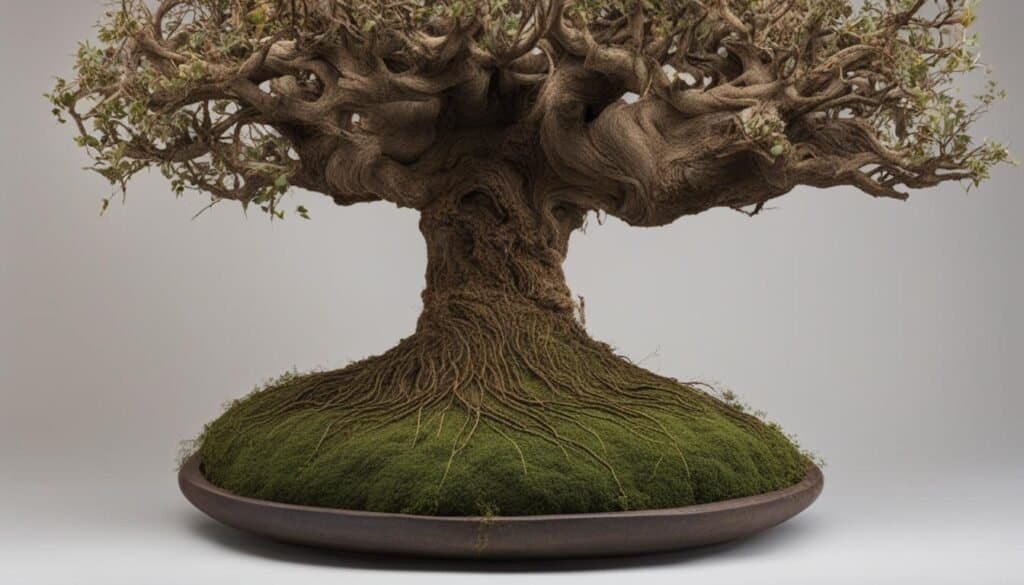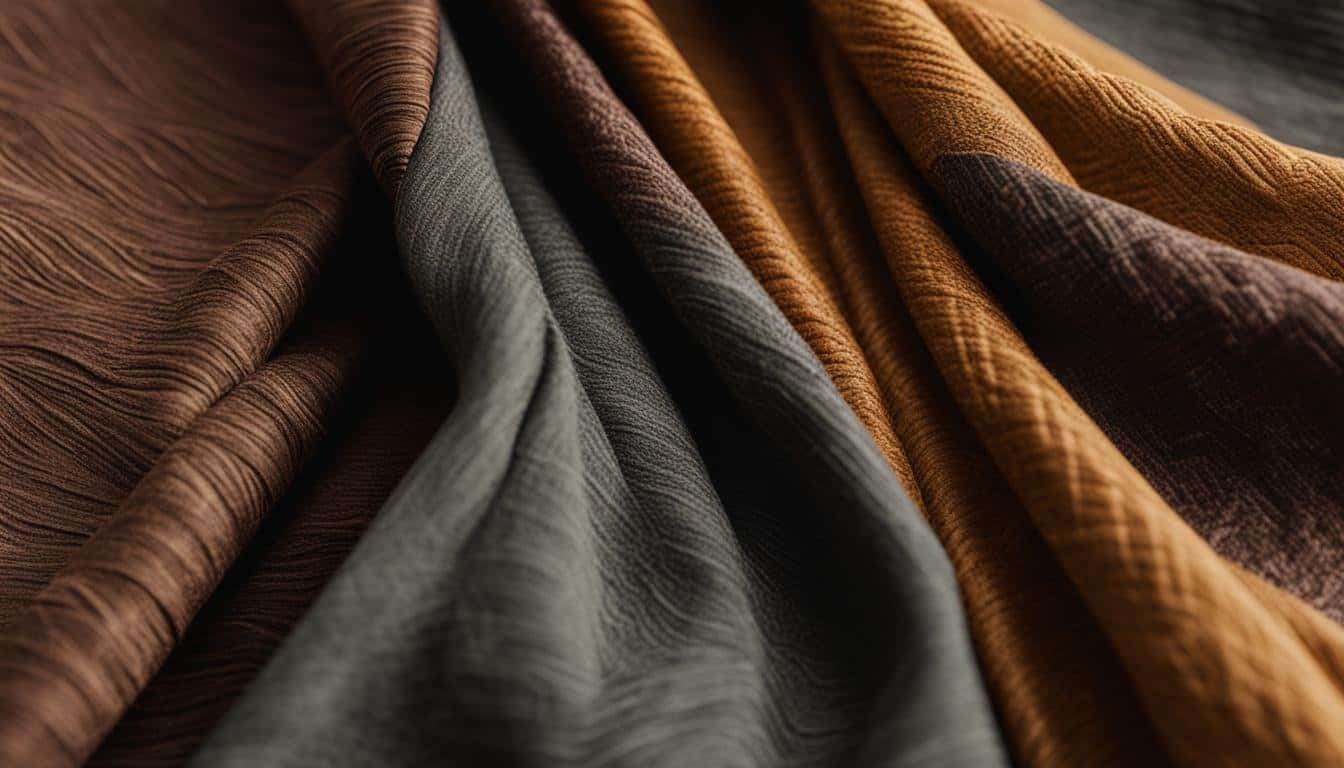As the world continues to grapple with the consequences of our environmental impact, a growing number of eco-conscious consumers are turning to sustainable natural fiber clothing options.
By choosing garments crafted from eco-friendly materials like organic cotton, hemp, and bamboo, individuals are not only minimizing their carbon footprints but also promoting a more sustainable fashion industry. This article will delve into the numerous benefits of embracing natural fibers, both for our planet and for our collective fashion sense.
Key Takeaways
- Natural fiber clothing offers a sustainable alternative for eco-conscious consumers
- Sustainable natural fibers such as organic cotton, hemp, and bamboo help minimize environmental impact
- Natural fiber garments combine style with eco-friendliness, appealing to a growing audience
- Choosing biodegradable materials is an essential step towards a sustainable fashion industry
- Supporting brands that prioritize eco-friendly practices contributes to a positive change in the fashion landscape
Understanding the Appeal of Natural Fiber Textiles
The allure of natural fiber textiles is anchored in their environmental benefits, such as biodegradability and lesser resource consumption. These eco-friendly fabrics boast remarkable qualities, including breathability, comfort, and versatility, making them favorable for various fashion styles. Apart from reducing ecological harm, they target issues like textile dermatitis through hypoallergenic properties.
Choosing Natural Fabrics: According to LaJolla.com, you should opt for natural fabrics since synthetic materials like polyester contribute to pollution and take hundreds of years to decompose. Natural fibers like organic cotton, hemp, linen, or bamboo are more sustainable options.
Consumers are increasingly drawn to these fibers due to ethical supply chains and fair labor practices recognized by eco-conscious shoppers. Let’s delve deeper into these appealing characteristics to better comprehend why natural fiber textiles are gaining traction in the fashion world.
- Eco-friendly and Biodegradable: Sustainable materials like natural fibers are more environmentally friendly than synthetic alternatives, decomposing much faster and reducing the amount of waste in landfills.
- Breathable Comfort: Natural fiber textiles provide excellent breathability, allowing air to circulate around the skin and enhancing overall comfort. This makes them the ideal choice for hot and humid conditions.
- Versatile Natural Fabrics: With a wide range of textures, colors, and properties, natural fiber textiles offer endless possibilities for innovative and sustainable fashion designs.
Another critical aspect to consider is the rising prevalence of textile dermatitis – skin irritation and allergies caused by synthetic fibers. Natural fiber textiles address this concern with their hypoallergenic properties. Fabrics like organic cotton, bamboo, and hemp alleviate skin irritation, providing a healthier alternative for those with sensitive skin.
| Fabric | Hypoallergenic | Biodegradable | Comfort |
|---|---|---|---|
| Organic Cotton | Yes | Yes | High |
| Bamboo | Yes | Yes | High |
| Hemp | Yes | Yes | High |
Furthermore, sustainable brands and fair trade practices have an undeniable impact on consumer preferences. Ethical supply chains encourage purchasing decisions that support socially and environmentally responsible practices. Brands that prioritize both production ethics and the use of natural fiber textiles are consequently capturing the attention of the eco-conscious shopper.
“The sustainable fashion movement is not a trend, but a demand for change reflecting a new way of thinking about the clothes we wear, the resources we consume, and the values we hold.”
Natural fiber textiles’ environmental benefits and exceptional qualities make them ideal for the creation of eco-friendly and sustainable garments. As consumers become more conscious of their choices’ environmental impact, it’s evident that natural fiber textiles will continue to gain momentum in the fashion industry.
The Pillars of Sustainable Fashion: Organic Cotton and Beyond
In the sustainable fashion industry, organic cotton serves as a beacon, offering an eco-friendly alternative to conventional cotton production. With its lower carbon footprint and reduced chemical usage, organic cotton is a cornerstone of sustainable materials. Certifications like GOTS (Global Organic Textile Standard) help consumers trust that they are purchasing products adhering to stringent environmental and ethical standards, reinforcing the sustainability efforts in fashion.
From Organic to GOTS-Certified: The Spectrum of Cotton Sustainability
When it comes to cotton sustainability, the evolution from conventional cotton to certified organic cotton represents substantial progress. Conventional cotton cultivation uses vast amounts of water and pesticides, whereas organic cotton reduces both water and chemical consumption. GOTS-Certified cotton takes this a step further, ensuring that environmentally friendly and socially responsible practices are followed throughout the entire production process.
“The GOTS certification means that the whole supply chain, from the cotton field to the final product, must meet high environmental and social criteria.”
Wool, Linen, and Hemp: Unraveling the Benefits of Other Natural Fibers
Beyond organic cotton, other natural fibers including wool, linen, and hemp play a significant role in the sustainable fashion industry. Each of these materials offers unique advantages:
- Wool: Renowned for its insulating properties, making it ideal for winter wear.
- Linen: Celebrated for its sustainability and cooling effect, keeping wearers comfortable in hot climates.
- Hemp: Prized for its eco-warrior status, as it requires minimal water and no pesticides to grow.
These natural fibers provide durable, biodegradable, and comfortable alternatives for environmentally conscious consumers looking to make a positive impact through their wardrobe choices. With the rise in demand for eco-friendly clothing, there has been a shift towards embracing sustainable fabrics and practices in the fashion industry.
| Natural Fiber | Benefits | Environmental Impact |
|---|---|---|
| Organic Cotton | Soft, breathable, durable | Lower water and chemical usage compared to conventional cotton |
| Wool | Insulating, moisture-wicking, renewable | Biodegradable, low environmental impact |
| Linen | Highly absorbent, cooling, strong | Low water footprint, minimal use of pesticides |
| Hemp | UV resistant, hypoallergenic, antimicrobial | Low water consumption, no pesticides needed |
By prioritizing the use of natural fibers like organic cotton, wool, linen, and hemp, the fashion industry can significantly reduce its environmental impact and pave the way toward a more sustainable future.
Environmental Ethics: The Lifecycle of Eco-Friendly Clothing

At the heart of sustainable fashion lies a strong commitment to environmental ethics. This is best exemplified through an understanding and appreciation of the lifecycle of eco-friendly clothing. By embracing eco-conscious fashion options, such as natural fiber clothing, we not only make a positive impact on the environment but also work towards reducing waste and landfill burden.
Let’s take a closer look at how biodegradable apparel contributes to the reduction of textile waste and landfill contribution.
At every stage of the lifecycle of eco-friendly clothing, there is a concerted effort to embrace sustainable practices, both in production and disposal. To truly appreciate the impact our wardrobe choices have on the environment, we need to examine specific aspects of the lifecycle of sustainable clothing:
- Raw Material Sourcing: Sustainable clothing starts with the selection of eco-friendly raw materials, such as organic cotton, hemp, linen, and bamboo. These natural materials are grown and harvested using sustainable practices, significantly reducing the use of harmful chemicals and water consumption compared to traditional textiles.
- Manufacturing and Production: The production of eco-conscious garments involves reducing energy consumption, water usage, and minimizing waste and pollution. Fair labor practices and transparent supply chains reinforce sustainable practices within the industry.
- Transportation and Distribution: Sustainable brands often prioritize local manufacturing and distribution channels, all in a bid to minimize carbon emissions throughout transportation.
- Use and Maintenance: Eco-friendly clothing is designed to last, reducing the need for frequent replacements. Environmentally friendly laundry practices, such as air drying and using biodegradable detergents, further contribute to green garment care.
- Disposal and Recycling: Biodegradable apparel decomposes much quicker than synthetic counterparts, significantly lowering the environmental footprint of our wardrobes. Moreover, some sustainable brands encourage recycling initiatives to ensure garments are repurposed instead of ending up in landfills.
When we choose eco-conscious fashion, we align ourselves with environmental ethics that promote sustainable wardrobes, reducing waste and contributing to landfill reduction. By making mindful clothing choices, we can help pave the way to a greener future, one garment at a time.
Fast Fashion vs. Sustainable Styles: A Critical Comparison

When it comes to the world of fashion, two contrasting movements have been shaping the industry: fast fashion and sustainable styles. These two forces stand in stark opposition to one another, with the former focusing on rapid turnover and mass production, and the latter on ethical considerations and minimal environmental harm. By understanding the key differences between these two approaches, we can better grasp their respective impacts on the environment and society.
Certification for Organic Principles: Jackie Warehime suggests that to ensure a garment adheres to organic principles, look for products that have the Global Organic Textile Standard (GOTS) certification.
Fast fashion, as the name suggests, is centered on the rapid production of trendy clothing made from synthetic fibers like polyester and nylon. This approach, driven by consumer demand for affordable and fashionable clothing, leads to an immense amount of waste and pollution. The fashion industry is estimated to contribute around 10% of global greenhouse gas emissions, while synthetic fibers take hundreds of years to decompose in landfills. Moreover, fast fashion often exploits labor and human rights with poorly paid workers and dangerous working conditions.
“Sustainable fashion combats the ecological detriment of quick trends by offering a pathway to reduced chemical pollution, conserving water, and prioritizing ethical production methods.”
On the other hand, sustainable styles reflect a more ethical and eco-friendly approach to fashion. By utilizing natural, biodegradable materials and adopting practices like water conservation and energy efficiency, sustainable fashion seeks to reduce its environmental impact and promote fairness in labor practices. Sustainable styles often incorporate organic or recycled materials that have a much lower environmental footprint compared to synthetic fibers.
Here, we compare the impacts of fast fashion and sustainable styles in terms of environmental and social aspects:
| Aspect | Fast Fashion | Sustainable Styles |
|---|---|---|
| Material Usage | High reliance on non-renewable, synthetic fibers. | Utilizes sustainable, organic, and recycled materials. |
| Environmental Impact | Contributor to climate change, chemical pollution, and excessive water usage. | Reduced greenhouse gas emissions, chemical pollution, and water conservation. |
| Waste Generation | Massive waste production due to short product life-cycles and extensive use of non-biodegradable materials. | Focus on durability and biodegradable materials, reducing waste. |
| Labor and Ethics | Apparent exploitation of low-wage labor and poor working conditions. | Emphasis on fair wages and ethical labor practices. |
The contrast between fast fashion and sustainable styles underscores the importance of our choices as consumers. By opting for eco-friendly, ethical fashion options, we can contribute to a greener, more just world and help foster a sustainable fashion revolution.
Innovative and Sustainable: The Latest in Natural Fiber Technologies
As the demand for sustainable fashion continues to grow, the industry has been seeking ways to make apparel more eco-friendly. This has resulted in significant strides in natural fiber technologies, which are paving the way towards innovative sustainable fabrics. By experimenting with alternative materials and utilizing eco-innovation to create renewable textiles, the fashion world is rapidly becoming more environmentally responsible.
From fibers derived from pineapple leaves to seaweed-based textiles, the possibilities are seemingly endless when it comes to green fashion. The introduction of these alternative materials provides a wealth of benefits, including reduced water consumption and lowered carbon emissions. These advancements are propelling the sustainable fashion industry into a new era of eco-friendly clothing.
- Pinatex: A natural fiber made from pineapple leaves, Pinatex is a unique material that offers a vegan leather alternative. This eco-friendly fabric is both durable and biodegradable.
- Seacell: Made from seaweed and eucalyptus, Seacell is an innovative textile that has been touted for its skin-friendly properties. This sustainable fabric is breathable, soft, and even releases nutrients and vitamins onto the skin when worn.
- Orange Fiber: Created from discarded citrus peels, Orange Fiber is a silk-like material that offers an environmentally friendly twist on luxury fabrics. Its production process helps to reduce waste and conserve resources.
“Fashion is not something that exists in dresses only. Fashion is in the sky, in the street. Fashion has to do with ideas, the way we live, what is happening.” – Coco Chanel
As the sustainable fashion landscape continues to evolve, brands are investing in research and development to take advantage of these alternative materials, pushing the boundaries of green fashion even further. This shift towards eco-innovation ensures that the clothing industry can continue to meet the growing demand for environmentally responsible products while at the same time cultivating a sustainable future.
| Material | Properties | Eco-Benefits |
|---|---|---|
| Pinatex | Durable, biodegradable, vegan leather alternative | Utilizes waste from pineapple farming, reduces water consumption |
| Seacell | Breathable, soft, releases nutrients and vitamins onto the skin | Requires fewer resources during production, biodegradable |
| Orange Fiber | Silk-like texture, lightweight | Reduces waste from the citrus industry, conserves resources |
By embracing these innovative natural fiber technologies, we are not only reshaping the fashion industry but also contributing to a lasting positive impact on the environment. In what seemed impossible a few years ago, a sustainable and fashion-forward wardrobe is now well within reach, propelling consumers and brands together towards a more eco-conscious future.
Style with a Conscience: Iconic Eco-Friendly Fashion Brands

Eco-friendly fashion brands like Tentree, MATE the Label, and Harvest & Mill are emblematic of style with a conscience. These pioneering brands are celebrated not only for their fashionable pieces but also for their unwavering commitment to sustainable and organic materials. They adhere to standards such as the Global Organic Textile Standard (GOTS), endorsing the ethical growth of the sustainable textile industry.
Elevating Eco-Fashion: Profiles of Pioneering Sustainable Brands
Tentree is known for its casual and comfortable apparel made from sustainable organic cotton, hemp, and recycled materials. The brand shines for its mission to plant ten trees for every product sold, significantly contributing to reforestation efforts worldwide.
MATE the Label specializes in producing eco-friendly essentials made from GOTS-certified organic cotton. With emphasis on ethical clothing production, MATE’s commitment to transparency reveals a dedication to improve the overall impact on the environment and people’s well-being.
Harvest & Mill, a US-based brand, focuses on using locally-grown organic cotton, minimizes water waste, and employs environmentally friendly dyeing processes. By sourcing their materials within the United States, they reduce the carbon footprint associated with transportation and support a sustainable textile industry.
By choosing to support eco-friendly fashion brands such as Tentree, MATE the Label, and Harvest & Mill, consumers make a powerful statement about their values and contribute to the growth of a more sustainable and ethical fashion landscape.
These trailblazing sustainable clothing brands embody the essence of iconic eco-fashion. They encourage us to embrace stylish, high-quality garments that align with our values while treading lightly on our planet, making a lasting impact on both the fashion industry and the environment.
| Brand | Key Sustainable Material | Environmental Initiative |
|---|---|---|
| Tentree | Sustainable Organic Cotton | Planting ten trees for every product sold |
| MATE the Label | GOTS-Certified Organic Cotton | Transparent and ethical clothing production |
| Harvest & Mill | Locally-Grown Organic Cotton | Environmentally friendly dyeing processes and minimized waste |
The Impact of Fair Trade and Ethical Practices in Clothing Production
Fair trade and ethical practices play a crucial role in clothing production, impacting both environmental sustainability and social justice. Establishing ethical supply chains and fair wage structures, these practices contribute to the advancement of sustainable fashion practices. By supporting these principles, consumers effectuate change towards an equitable and eco-conscious fashion industry.
Ethical practices in clothing production promote values such as respect, fairness, and transparency in dealing with workers, suppliers, and customers. This includes providing safe working conditions, respectful labor policies, no child labor, and waste reduction measures. By adhering to these practices, sustainable fashion companies prioritize the well-being of people and the environment, paving the way for a more responsible industry without compromising on style or comfort.
“The revolution starts at the source: the processions and hands that path the pieces together. Producing ethical means respecting every person involved and to ensure they have the agency they deserve.” – Kowtow, a sustainable fashion brand
Consumers are increasingly seeking out responsible brands that demonstrate a commitment to social justice and eco-conscious fashion. To help identify companies embracing fair trade and ethical practices, organizations such as the Fair Trade Federation, Global Organic Textile Standard, and the Fair Labor Association provide certifications and guidelines, signifying their adherence to social and environmental standards.
- Fair Trade Federation: An international system verifying fair wages, safe working conditions, and environmentally responsible production.
- Global Organic Textile Standard (GOTS): A standard for organic fibers worldwide, ensuring textile products are made with socially and environmentally responsible methods.
- Fair Labor Association: This organization works to protect workers’ rights and improve conditions around the world by promoting adherence to international labor standards.
By consciously supporting brands that adopt these values, consumers can make a significant impact in promoting change in the fashion industry, moving it towards a more sustainable and ethical future. Below is a table illustrating the differences between traditional and fair trade supply chains, accentuating the impact of ethical practices in clothing production.
| Traditional Supply Chain | Fair Trade Supply Chain |
|---|---|
| Low wages and exploitation of workers | Living wages and fair labor conditions |
| Environmental degradation due to high resource use | Reduced environmental impact with sustainable practices |
| Poor working conditions | Safe and healthy working environments |
| Fast fashion culture promoting waste | Emphasis on quality, durability, and eco-friendly practices |
In conclusion, the impact of fair trade and ethical practices in clothing production is undeniably significant, as they foster a conscious shift towards a more sustainable and just fashion industry. By promoting social equity, eco-conscious fashion, and ethical supply chains, the industry can collectively redefine fashion’s purpose in society and work towards establishing a stable, sustainable world where style and substance coexist harmoniously.
Consumer Shift: How to Transition to a Natural Fiber Wardrobe

Transitioning to a natural fiber wardrobe is an essential step towards embracing a more sustainable lifestyle. By incorporating garments made from natural fabrics like wool, linen, and organic cotton, individuals can create wardrobes that reflect their eco-friendly values. Conscious fashion choices empower consumers to support sustainability in the fashion industry and reduce their environmental footprint. Here’s how you can make the shift:
- Research sustainable brands and fabrics: Begin by learning about various natural clothing options and research brands offering sustainable and ethical products. Familiarize yourself with the different types of natural fibers available and their benefits.
- Assess your current wardrobe and needs: Evaluate the contents of your wardrobe, identifying items that are made from synthetic fibers or fast fashion brands. Consider your lifestyle and prioritizing eco-friendly, durable, and versatile pieces that will last.
- Start with essentials: Gradually replace key wardrobe staples made from synthetics with natural fiber alternatives. Focus on items such as underwear, socks, t-shirts, and basic tops that you wear frequently.
- Plan purchases intentionally: When adding new items to your wardrobe, choose quality over quantity, opting for natural and sustainable fabrics that will stand the test of time.
- Consider secondhand options: Explore thrift stores and consignment shops to find pre-loved natural fiber clothing. This helps reduce waste and the overall demand for new garments.
- Spread awareness and learn from others: Join online communities and engage with others who share your passion for sustainable fashion. Share your insights, experiences, and learn from others who have transitioned to a natural fiber wardrobe.
“Every time you spend money, you’re casting a vote for the kind of world you want.” – Anna Lappé, Author and Sustainable Food Advocate
Making the transition to a natural fiber wardrobe may seem like a daunting task, but it doesn’t have to be overwhelming. By taking small, intentional steps and focusing on sustainable wardrobe choices, you can contribute positively to both your own well-being and the health of the planet. Embrace the eco-friendly consumer shift and make conscious fashion choices that help create a brighter, greener future.
Sustainable Care: Tips for Maintaining Natural Fiber Garments
To preserve the longevity and sustainability of your natural fiber garments, adopting eco-friendly laundry practices is essential. Not only do these methods extend the life of your clothing, but they also support an eco-conscious lifestyle. Read on for tips on maintaining natural fiber garments while minimizing your environmental impact.
Eco-Friendly Laundry Practices to Preserve Your Sustainable Clothing
- Use gentle, biodegradable detergents: Choosing biodegradable and eco-friendly detergents is crucial for maintaining the quality of your natural fiber garments. They contain fewer harsh chemicals, reducing the risk of damage to your clothing and ensuring minimal impact on the environment.
- Implement low-energy washing cycles: Opting for energy-efficient washing machines or low-temperature washing cycles can help conserve energy and reduce your environmental footprint. In addition, cold water washes are gentler on natural fiber garments, helping maintain their structure and overall quality.
- Air-dry whenever possible: Air-drying is an energy-efficient and environmentally friendly method for drying your garments. Hang your clothing outdoors, or use an indoor drying rack to allow your garments to dry gently and naturally, preserving their shape and quality.
Remember, conscious garment care not only preserves your clothing but also supports an eco-conscious lifestyle and contributes to a greener planet.
| Eco-Friendly Laundry Practice | Environmental Benefit | Impact on Natural Fiber Garments |
|---|---|---|
| Biodegradable Detergent | Reduced chemical pollution | Minimized damage to fibers |
| Low-Energy Washing Cycles | Energy conservation | Preserved fabric structure |
| Air-Drying | Lower carbon footprint | Maintained garment shape and quality |
Adopting eco-friendly laundry practices is vital to maintaining natural fiber garments and supporting a sustainable lifestyle. By taking these simple steps, you can ensure your clothing remains in excellent condition while contributing to a healthier environment.
The Global Movement Towards Sustainable Fashion Industry Practices
The global movement towards sustainable fashion industry practices signifies a worldwide eco-friendly transition to environmentally responsible fashion. Spearheaded by both ethical textile producers and eco-conscious consumers, this shift advocates for reduced energy consumption, minimized chemical pollution, and sustainable fabric options like organic cotton and linen. It represents an industry-wide commitment to preserving the planet and fostering ethical labor standards.
These eco-friendly efforts have gained traction in recent years, as more and more businesses adopt eco-friendly practices and prioritize ethical textile production. Major fashion companies have started to incorporate sustainable materials into their supply chains, ensuring that their garments reflect an environmentally responsible ethos.
Eco-conscious consumers play a significant role in this global movement, as their purchasing choices drive brands to adopt sustainable practices and commit to environmentally responsible fashion.
Let’s look at some of the key components of this global movement, touching upon consumer demands, industry initiatives, and the accelerating worldwide eco-friendly transition.
- Increased awareness and adoption of sustainable fashion industry practices: With greater education and understanding of the environmental impact of fashion, consumers are motivated to seek out brands that prioritize sustainable choices.
- Best practices in ethical textile production: Companies have begun to collaborate and share knowledge on sustainable practices. By adopting efficient production methods and eco-friendly manufacturing processes, the industry can significantly reduce its environmental footprint and resource consumption.
- Consumer-driven demand for transparency and traceability: Informed customers expect to know the origin of their clothing, leading to increased scrutiny of supply chain transparency and the use of ethical certification systems like Fairtrade, GOTS, and Cradle-to-Cradle.
As more brands join the movement towards sustainable fashion industry practices, we can look forward to a more eco-friendly future where style and environmental responsibility are seamlessly intertwined. By embracing this shift, we can all contribute to a healthier planet and foster a culture of conscious consumption.
Embracing the Sustainable Fashion Movement
As we become increasingly aware of the environmental impacts of our daily choices, sustainable fashion has started to gain momentum across the globe. Natural fiber clothing offers an eco-friendly solution for the future, allowing consumers to make ethical fashion choices and contribute towards a healthier planet. With brands such as Tentree, MATE the Label, and Harvest & Mill paving the way for sustainable clothing, we can expect to see a continued surge in eco-conscious consumerism.
Eco-friendly textiles like organic cotton, wool, hemp, and linen lie at the heart of the sustainable fashion movement. By prioritizing these natural fibers in our wardrobes, we are not only aligning our values with environmental awareness, but also supporting ethical manufacturers and their responsible practices. This commitment to the ethical aspects of fashion goes beyond sustainable materials, encouraging better labor standards and fair trade practices throughout the industry.
Maintaining the momentum of the sustainable fashion movement requires continued innovation, as well as the engagement of consumers and brands alike. By supporting ethical fashion choices, like those offered by pioneering eco-friendly brands, we play a vital role in championing the sustainable fashion cause. Together, we can help protect our planet while looking stylish by embracing natural fiber clothing and the future of eco-friendly fashion.
FAQ on Natural Fiber Clothing for Eco-conscious Consumers
Q: What are some top natural fiber clothing brands?
A: Some of the top natural fiber clothing brands include Patagonia, People Tree, and Everlane, known for their best sustainable and ethical practices. These organic clothing brands extensively use natural fibers such as cotton in their items, making them popular among the eco-conscious customers.
Q: Why should consumers opt for clothing made from natural fibers over synthetic fabrics?
A: Natural fibers offer benefits that synthetic fabrics usually can’t match. They are generally more breathable, comfortable and sustainable. Additionally, organic cotton clothing is biodegradable, making it a more environmentally friendly clothing option.
Q: What is special about fabric made from sustainable fabrics such as organic cotton?
A: Organic cotton is grown without the use of harmful pesticides or synthetic fertilizers. This makes fabric made from organic cotton gentler on your skin, better for farmers and field workers and kinder to the environment.
Q: What are the best sustainable organic cotton clothing brands?
A: Some of the best sustainable organic cotton clothing brands include Eileen Fisher, Pact, and Alternative Apparel. These brands are known for using eco-friendly practices and GOTS certified organic cotton, which means the cotton used is grown sustainably and ethically.
Q: How does organic cotton clothing contribute to sustainable living?
A: Organic cotton clothing contributes to sustainable living as it’s made without harming the environment or the workers involved in its production. Also, clothing items made from organic and recycled cotton are biodegradable, reducing their impact on the environment after use.
Q: What kind of fabric is considered eco-friendly?
A: Fabrics such as organic cotton, hemp, linen, and bamboo are considered eco-friendly as they are sourced from sustainable organic processes. Some brands also use recycled cotton or other recycled materials, which contributes to the reduction of textile waste.
Q: Why is it important to support sustainable clothing brands?
A: Supporting sustainable clothing brands means supporting a healthier environment and fair working conditions. These brands usually align with the values of the World Fair Trade Organization and strive for sustainability, including using natural fibers and minimizing waste.
Q: What clothing items are usually made from natural fibers?
A: Almost every clothing item can be made from natural fibers. This includes T-shirts, jeans, dresses, and even underwear. Organic clothing brands produce a wide variety of clothing items made from natural materials such as cotton and hemp.
Q: Are natural and synthetic fibers used together in clothing?
A: Yes, sometimes natural and synthetic fibers are combined in a clothing item for added strength, durability, or specific performance features. However, for environmentally friendly clothing, brands prefer using fabrics containing a higher percentage of natural fibers.
Q: What makes cotton fabrics more breathable than synthetic ones?
A: Natural fibers like cotton have a more open structure that allows air to pass through easily, making them more breathable than synthetic fibers. This makes cotton fabrics a preferred choice for clothing items like shirts, summer dresses, and bed linens, especially among the eco-conscious consumers.





Leave a Reply